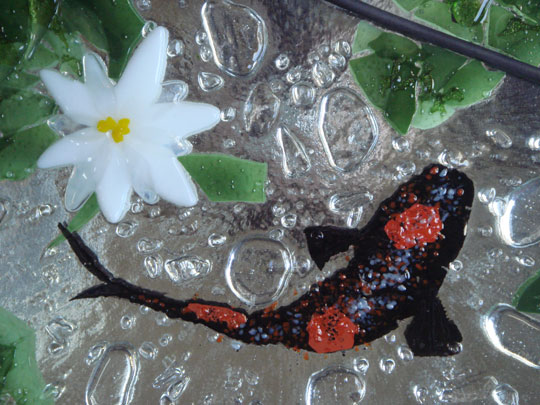Koi are one of the most prized of pond fish and a large part of the reason for this is the dazzling array of colors and patterns they can appear in. Besides this they are very hardy fish and can be very long-lived. Average life span is around thirty years but a couple are reputed to have lived two-hundred years. Koi fry emerge from the egg around a week after spawning takes place, however color doesn't set until around twelve weeks of age.
The number of patterns and colors Koi can display is confusing at first, yet most come down to some combination of red and white. Black has remained elusive, so the few varieties of koi with black in their coloring have come to be regarded as a separate group known as black koi.
The only variety of koi that appears entirely black is the magoi strain. It is actually a very dark bronze color but seems to be black when viewed from above. Because they are so unusual there is some dispute about whether they should really be counted as koi. They have an extra characteristic that makes them very valuable, however, and that is size. Magoi fish grow bigger than other varieties of koi so there is a trend now to interbreed them with other strains to produce very large fish for big ponds.
One type of black koi which has been around for a long time is the crow, called Karasu in Japanese. It can occasionally have black fins and a black body. More typically only the fins are black, while the body is white or orange.
The most popular black koi variety was only developed around 1980. It is called the dragon, Kumonryu. The main characteristic of these fish is a light body with a jet black pattern on it. This pattern is unstable and can change shape or disappear altogether in response to changing conditions of temperature or other factors in their environment. Sometimes the black coloration can appear totally stable. Other fish can change from one pattern to another in just a few weeks. One weakness this breed displays at times is irregularities in the the tail and pectoral fins.
Another koi variety noted for changing its pattern is the matsukawabake. They are almost always white or light gray, with black areas on the flanks and the top of the body. The edges of these black areas should be wavy to qualify as a true Matsukawabake.
Color is one of the biggest reasons for keeping Koi. The ever-changing swirl of red, white and black can be breathtaking, especially at feeding time when the fish all appear at the same place.

No comments:
Post a Comment